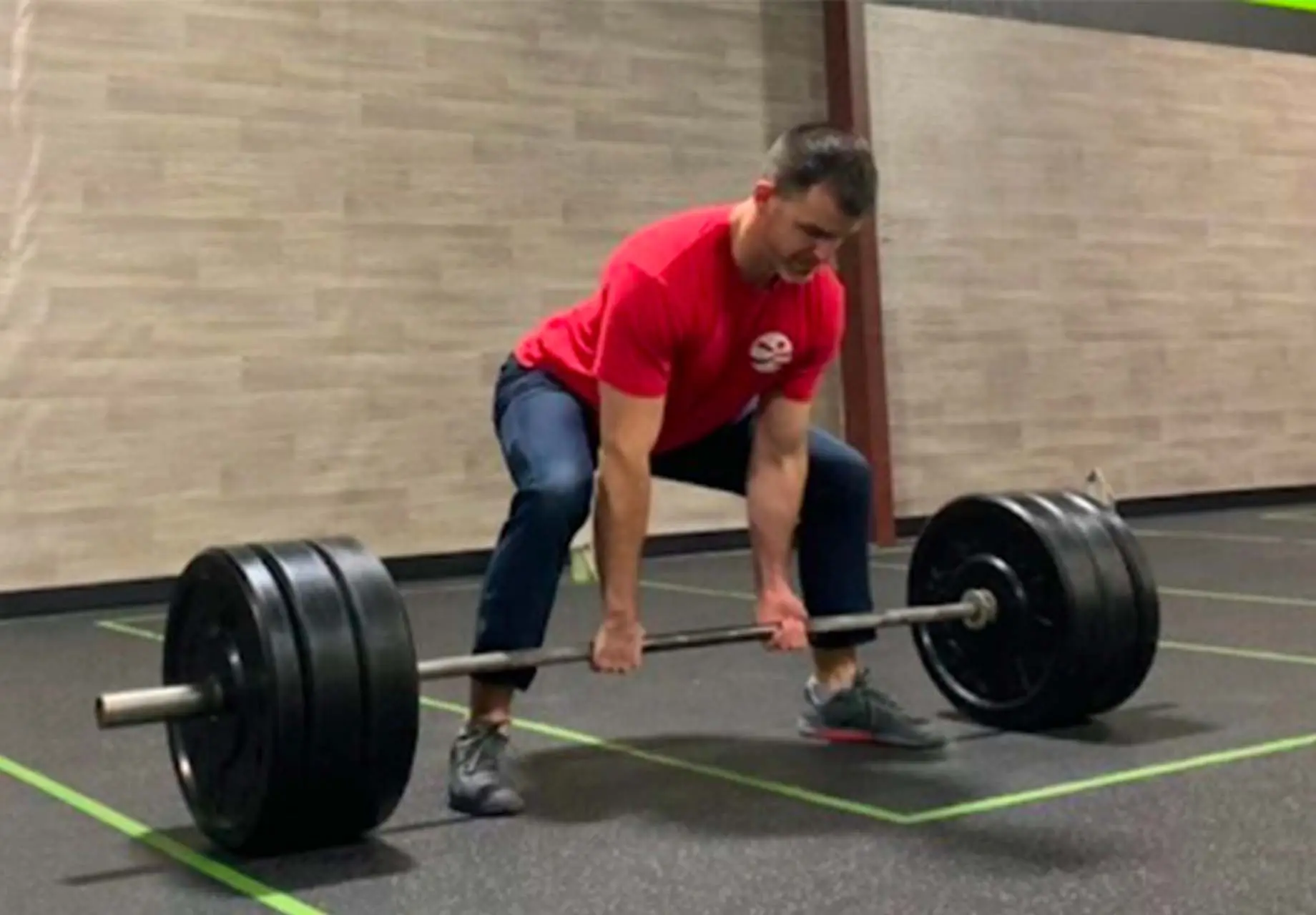Rest is best, right? Well, it’s a bit more complicated than that. Of course there are times where rest can help resolve some muscle soreness, especially if you have been training high volumes with your lifts or if you have significantly increased your mileage with running. We’d also be remiss not to mention proper sleep and recovery.
Still, rest alone isn’t the answer to everything and oftentimes leads people down a path of prolonged recovery and time spent away from doing what they love.
Over the years we have seen this time and again. That’s why we’ve put together this list of five injuries that likely won’t resolve with rest alone, as well as a couple of tips for how to get started resolving them, so that if these issues arise you know exactly what to do to get back to training.
Here are the five injuries that likely will not be resolved with rest alone, along with a couple of tips for how to get started resolving them.
1. Back Pain With Deadlifts
Back pain during deadlifts can come from one of three things (or a combination of all three). These three things are 1) you lack trunk stability, 2) you lack hip extension strength, or 3) you lack hip extension mobility. The combination of these things can cause you to overextend your low back during the lock out instead of extending through your hips at the top. This back-and-forth motion, coupled with a loaded spine, will cause your brain to throw up a red flag and give you a “check engine soon” light known as low back pain. You’re probably saying, “But what should I work on to turn off that warning light?” Answer 1: Improve your ability to keep your trunk stable. Think ribs down when lifting. Answer 2: Work on improving your hip extension mobility and then hit the save button and lock it in by following it up with something like a single leg glute bridge |
2. Hip Pain with Squats
|
Pain in the front of your hips or a “pinching” sensation is very common. This can happen for multiple reasons but more than likely your hips are just running out of room when you go down in your squat. “What should I work on?” Answer 1: Improve your ability to keep your trunk stable. Again, think ribs down when lifting. This will put your pelvis in a better position which will help to increase depth in your squat. Answer 2: Improve your hip flexion mobility. This is the ability to move your knee toward your chest. If you get a “pinching” feeling by laying on your back and bringing your knee to your chest, then this is for you: |
3. Knee Pain with Running
|
There are a couple of reasons you may be feeling pain in your knee while running. The things that seem to pop up repeatedly in our clinic are limited hip mobility, poor hip control, and a hard landing during foot strike. “What should I work on?” Answer 1: Improve your hip mobility as well as stability. This will not only allow you to move through the full range of motion during your stride but will help to keep less tension on your quadriceps, which can pull on the knee (the quad tendon crosses over the knee) and cause knee pain. (See Hip Extension Mobility Video Above) Answer 2: Work on landing softer. Think about “landing like a ninja.” Your heel will make contact with the ground but ideally it should not be the first point of contact. One drill to improve this is to try running barefoot on the grass, then put your shoes on and run the same way you were when you were barefoot. Some people will opt to just run barefoot or in minimalist shoes, too. |
4. Shoulder Pain With Pull-ups
A common complaint with pull-ups is a “pinching” feeling or pain in the shoulders with pull-ups. If this is the case for you, you likely are having some difficulty with overhead mobility and/or stability. With movements like the overhead press, the humerus (arm bone) needs to be able to sit back. If it isn’t able to, it will run into the front part of the shoulder blade (aka acromion) which can cause pain when you repeatedly move into this position. “What should I work on?” Answer 1: Work on improving your shoulder flexion mobility. This is the ability to move your arm straight in front of you to the overhead position. Answer 2: Work on improving your thoracic (mid-back) spine mobility. If your mid-back is tight and not moving properly, it will limit your ability to fully reach your arm overhead without compensation, such as excessive lumbar extension. |
5. Shoulder Pain With Pressing
|
Last but not least is another very common complaint. If you are having pain with a pressing motion such as the bench press, push-up or overhead press, it could very well be from a lack of shoulder stability. This simply means that you are having difficulty controlling your shoulder blade when you press a barbell or kettlebell. “What should I work on?” Answer 1: If you are having most of your issues during an overhead press I would start by working on overhead mobility. (See Overhead Band Opener Video Above) Answer 2: Practice stabilizing your shoulder blades and creating torque through your shoulder when pressing. By doing this, you will create a stable platform from which you can press both more efficiently and effectively. Now, as we mentioned earlier there are times when rest is important, and as we know recovery is just as important for you as your actual training is. However, if you are training movements with poor mechanics, there is no amount of rest that is going to fix that issue. If you have been dealing with stiffness or pain for weeks, months, or even years, and you haven’t been able to solve the problem on your own, then it is time to give us a call. We help active people just like you every day to continue their training without pain or limitations. |
Ready to get rid of pain and get back to movement and exercise?
Book a Free 30-Minute Discovery Call
Book a call with Bryan to discuss your needs, goals, and pain points. We’ll ask you a few questions about your injury and let you know how we can help.
Schedule a 60-Minute Initial Assessment
During your in-person evaluation, you’ll get a clear understanding of what’s causing pain and receive a custom plan to help relieve the pain and resolve the issue.
Achieve Your Goals
Get equipped with the skills and knowledge to prevent future injuries from limiting your performance. Most people work with us for about 6 to 10 visits over a 2 to 3 month period.



